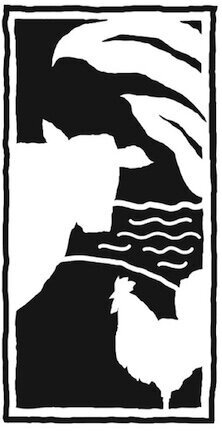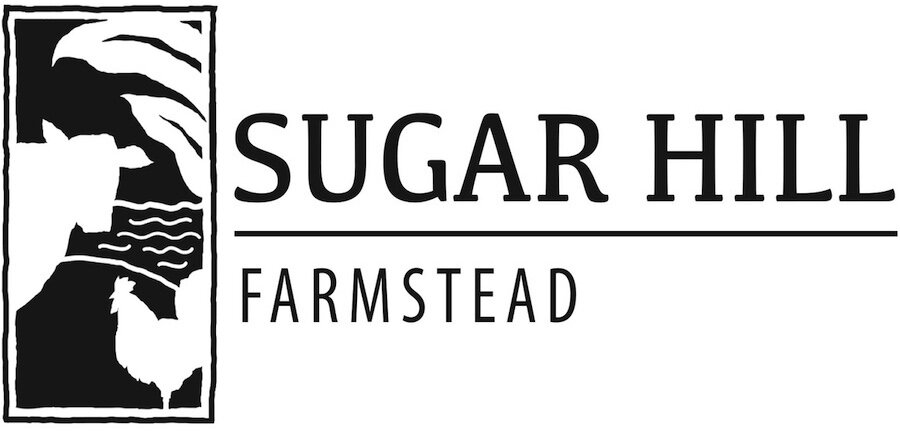Hawaii Wild Foraged Pears
And recipe for poached pears
We woke to a beautiful sunrise. The horizon was painted bright pink and orange with happy purple clouds lined up in rows. Magic, the rooster for the lower pasture, called out to welcome the day, and Josie from the upper field followed. Today, we decided to go to the orchard on the slopes of Mauna Kea.
Bodhi hurried through morning chores as I packed the truck and got Hadleigh ready for her first excursion. We were on a mission– to forage for the delightful apples and pears for Hadleigh. If all went as planned, we would arrive home later that day with a bounty of stone fruits to preserve for the next four months when Hadleigh would start eating solid foods.
As hunters and gatherers, we, as a collective people, used to spend the majority of the day foraging, preparing, preserving, and eating food. Every civilization developed rituals around food because it was so crucial for the survival of its people.
Our days today are filled with other types of rituals. Ordering a daily Starbucks coffee, drive-thru lunches, or watching a sitcom on TV with a microwaved meal at the end of the day have replaced stoking fires and sharing the day's bounty.
Author and food enthusiast Michael Pollan famously said, "Don't eat anything your great-grandmother wouldn't recognize as food." We tend to agree with Michael. But how would you know what your great-grandmother would recognize as food?
The family meal is a way to teach our young and pass down cultural food knowledge. Our great-grandparents often grew gardens for fresh vegetables, hunted, and fished. Some even raised their own animals for meat. They shared information with our grandparents through storytelling and active participation in food preparation.
Bodhi and I imagine his great-grandfather eating poi and grilled fish on the lanai of his home in Hakalau. My grandmother tells stories of her father, the butcher, bringing home calf's liver which the two of them ate together. So many of these stories and lived experiences have disappeared in the name of convenience.
The last 6 miles before the orchard slows us down to a crawl. A flock of turkeys ambles by as Bodhi maneuvers over the ancient rocky road. I look over at Hadleigh, and she is smiling with delight.
Convenience- you could call it progress or a step in the great food divorce that is robbing people of a connection to their food and each other.
There is nothing convenient about this trip, nothing whatsoever. It would be much easier to go to the grocery store and buy apples and pears when Hadleigh is old enough to eat them. But that wouldn't offer us a connection with our food, the kind of connection you get when you travel 2.5 hours to a hidden orchard planted in the 1800s on the side of a dormant volcano in the middle of the Pacific.
We arrive at the orchard, maneuver over the fence ladder, and begin picking. I carry Hadleigh and an umbrella for shade, while Bodhi has a picker and a bucket. We quickly discover several bosc pear trees, their branches hanging heavy with fruit. The matte cinnamon-colored skins and perfect pear shape of the bosc pear feel like I've found gold at the end of the rainbow in the palm of my hand.
After an hour, our bucket is filled with various fruits, some known and other varieties a complete mystery. A heavy misty rain begins to descend on the orchard as if to say, you have taken what you need; time to go home. Indeed it was time to start our long journey home, with our bellies full of pears and a not-nearly-as-content Hadleigh.
Diving deeper into our connection with food and choosing to live closer to the source is something we prioritize. It is one of the reasons we farm the way we do. Conventional farming methods don't consider the land, animal, or consumers' health. It doesn't want you to have a connection; its goal is to maximize food production as cheaply as possible.
We aim to lay a foundational relationship between our daughter and her food. It is that same connection we strive to offer our customers- good old-fashioned food in a convenient way. Food your great-grandparents would recognize but with the ability to order online.
Instead of using convenience as a crutch to cut corners, it can be an asset to deliver hand-crafted goodness. We encourage customers to pick up from the farm to help cultivate that profound relationship between them and their food.
We arrive back at the farm tired, but there are chores to be done and dinner to be made. Hadleigh, perched in her infant high chair, intently watches as we eat and recount the day's adventure. I believe she understands what we are saying and will enjoy her apples and pears that much more when the time comes.
Alcohol-free Poached Pear Recipe (from Ke Ola Magazine The Secret Life of Pears)
4 large pears
3 cups cranberry juice, sweetened by fruit juices is best
1/2 inch piece of ginger
1/4 tsp cinnamon
Method
Put cranberry juice, ginger, and cinnamon in a large pan or pot. Peel the pears and add to the juice and spice mixture. Bring to a boil, then reduce the heat to a light simmer. Spoon juice over the tops of pears if they stick out. Cook for 15 minutes or until pears are just soft. Remove the pears from the pan, then increase the juice mixture to a light boil. Boil for around 15 minutes until the juice reduces and becomes a light syrup. Slice pears in half, removing the core and any seeds present. Plate the pears, then add a scoop of ice cream like locally made vanilla, maple walnut, or ginger to compliment the dish. Drizzle the syrup over the ice cream and pears, serve immediately. Enjoy!




